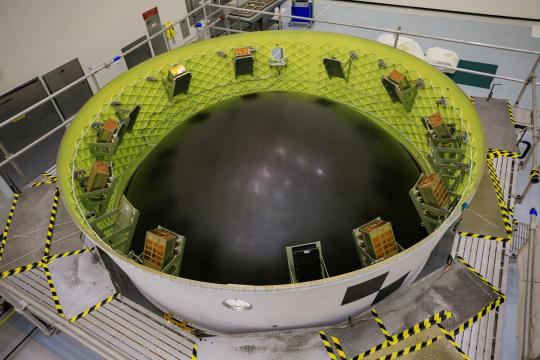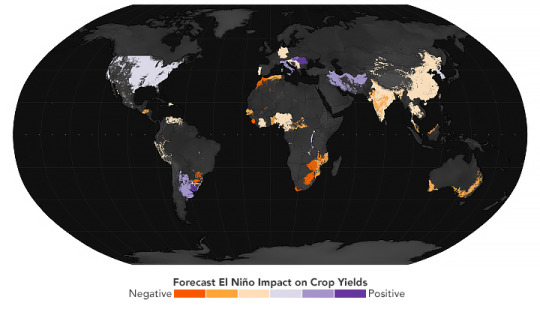#Data Recovery Agency
Text
Find the Best Data Recovery Company - Datarecoverylebanon
We are the world's Best Data Recovery Company. can check any media to see if it has been completely sanitized to ensure that all data on it has been deleted. We also have the expertise and tools to do so. Our erase verification services are beneficial to a variety of organizations, including technology manufacturers, storage integrators, and enterprises. Our service’s documented erasure verification and data security assurance benefit all customers.
USB Data Recovery is a powerful application that can restore files from a variety of USB flash drive devices, such as JumpDrive, Pen Drive, Pocket Drive, Thumb Drive, and USB memory, among others. It is regarded as the world’s best. Among these are documents, emails, photos, videos, music, and other file types.
The software solution is available as both a free download and an upgraded version that can meet more complex requirements. Despite its lower popularity, USB data recovery can be a powerful alternative to Disk Drill Data Recovery, EaseUS Data Recovery Wizard, and Recuva.
By breaking down the process into three simple steps, Safe365’s USB Data Recovery makes it simple to scan and retrieve data. The first thing you should do is run the software and install it. To access its homepage interface and begin scanning, you must click the “Start” button on your desktop. Here, you should be able to see and record the USB flash drives that are connected to your PC.
The specific storage device and file types you want to retrieve must be selected in the second step. Any and all files that were saved on your device in the past — such as audio, documents, videos, photos, emails, PDFs, and others — can be recovered. Depending on the number of contents that need to be restored, the scanning process can take anywhere from a few seconds to several minutes.
After that, a separate count will be made for each of the recoverable files. It will be shown in a folder structure alongside its name, type, size, date, and time. You will be required to select the items you want to restore to your system once more by pressing the “Record” button. The restoration process will be seamless due to the low CPU and memory usage. In the worst-case scenario, in which you accidentally lose or delete your data, USB data recovery is a useful data recovery tool that you should keep on your computer system. It is compatible with a wide range of storage media and can recover a wide variety of file types. It backs up its claim by providing world-class scanning and retrieval capabilities at the lowest possible cost.
2 notes
·
View notes
Link
#digital debt collection#debt collection technology trends#data collection agency india#digital debt recovery#ai automated debt collection#digital debt collection services#automation for debt collection#debt collection industry trends 2023
0 notes
Text
What is Artemis I?

On November 14, NASA is set to launch the uncrewed Artemis I flight test to the Moon and back. Artemis I is the first integrated flight test of the Space Launch System (SLS) rocket, the Orion spacecraft, and Exploration Ground Systems at NASA’s Kennedy Space Center in Florida. These are the same systems that will bring future Artemis astronauts to the Moon.

Standing 322 feet (98 meters) tall, the SLS rocket comprises of a core stage, an upper stage, two solid boosters, and four RS-25 engines. The SLS rocket is the most powerful rocket in the world, able to carry 59,500 pounds (27 metric tons) of payloads to deep space — more than any other vehicle. With its unprecedented power, SLS is the only rocket that can send the Orion spacecraft, astronauts, and cargo directly to the Moon on a single mission.

Before launch, Artemis I has some big help: the Vehicle Assembly Building (VAB) at KSC is the largest single-story building in the world. The VAB was constructed for the assembly of the Apollo/Saturn V Moon rocket, and this is where the SLS rocket is assembled, maintained, and integrated with the Orion spacecraft.

The mobile launcher is used to assemble, process, and launch the SLS rocket and Orion spacecraft. The massive structure consists of a two-story base and a tower equipped with a number of connection lines to provide the rocket and spacecraft with power, communications, coolant, and fuel prior to launch.

Capable of carrying 18 million pounds (8.2 million kg) and the size of a baseball infield, crawler-transporter 2 will transport SLS and Orion the 4.2 miles (6.8 km) to Launch Pad 39B. This historic launch pad was where the Apollo 10 mission lifted off from on May 18, 1969, to rehearse the first Moon landing.

During the launch, SLS will generate around 8.8 million pounds (~4.0 million kg) of thrust, propelling the Orion spacecraft into Earth’s orbit. Then, Orion will perform a Trans Lunar Injection to begin the path to the Moon. The spacecraft will orbit the Moon, traveling 40,000 miles beyond the far side of the Moon — farther than any human-rated spacecraft has ever flown.

The Orion spacecraft is designed to carry astronauts on deep space missions farther than ever before. Orion contains the habitable volume of about two minivans, enough living space for four people for up to 21 days. Future astronauts will be able to prepare food, exercise, and yes, have a bathroom. Orion also has a launch abort system to keep astronauts safe if an emergency happens during launch, and a European-built service module that fuels and propels the spacecraft.

While the Artemis I flight test is uncrewed, the Orion spacecraft will not be empty: there will be three manikins aboard the vehicle. Commander Moonikin Campos will be sitting in the commander’s seat, collecting data on the vibrations and accelerations future astronauts will experience on the journey to the Moon. He is joined with two phantom torsos, Helga and Zohar, in a partnership with the German Aerospace Center and Israeli Space Agency to test a radiation protection vest.

A host of shoebox-sized satellites called CubeSats help enable science and technology experiments that could enhance our understanding of deep space travel and the Moon while providing critical information for future Artemis missions.

At the end of the four-week mission, the Orion spacecraft will return to Earth. Orion will travel at 25,000 mph (40,000 km per hour) before slowing down to 300 mph (480 km per hour) once it enters the Earth’s atmosphere. After the parachutes deploy, the spacecraft will glide in at approximately 20 mph (32 km per hour) before splashdown about 60 miles (100 km) off the coast of California. NASA’s recovery team and the U.S. Navy will retrieve the Orion spacecraft from the Pacific Ocean.

With the ultimate goal of establishing a long-term presence on the Moon, Artemis I is a critical step as NASA prepares to send humans to Mars and beyond.
Make sure to follow us on Tumblr for your regular dose of space!
2K notes
·
View notes
Text
How many of you get excited when you see a monarch butterfly? If you do, did you get excited as a kid, or is the excitement a function of their possibly pending extinction? If you do not, can you imagine a world without monarch butterflies?
Excerpt from this story from E&E News/Politico:
Judgment day approaches for the monarch butterfly.
Bound by a court settlement, the Fish and Wildlife Service is supposed to decide by early December whether the monarch warrants listing as threatened or endangered. Although the agency misses many Endangered Species Act deadlines, it appears determined to meet this one after several years of study.
“We wanted to make sure that we have all the best science available … and we wanted to make sure that we were able to gather all that information and make a quality decision,” said Nicole Alt, director of FWS’ Center for Pollinator Conservation.
With the migratory butterfly passing through dozens of states, a decision to list the species could be accompanied by the designation of an expansive critical habitat. Combined with other regulatory implications, this could make the long-delayed monarch listing call one of the most consequential actions in the history of the ESA. It also appears likely, some monarch experts say, given the bleak population trends that led FWS to conclude in 2020 that “monarch viability is declining and is projected to continue declining over the next 60 years.”
Despite the dire circumstances, a campaign to help the monarch butterfly has been advancing on multiple fronts but without a unified commander in chief. Rather, the monarch’s allies march under different flags that reflect a dispersed approach toward species conservation. Some study the insect, some set aside habitat and some tinker with new tools, all without reference to a species recovery plan that an ESA listing would mandate.
Consider:
From an urban office building, a program administered by the University of Illinois, Chicago’s Energy Resources Center has recruited energy companies, state departments of transportation and counties into conserving hundreds of thousands of acres as butterfly habitat on rights of way, such as the medians between roads.
On sprawling Fort Cavazos — formerly Fort Hood — in Texas, biologists prowl the grounds in search of adult monarchs as well as eggs and larva. Since 2017, they estimate they have collected information from more than 10,000 tagged adult monarchs and forwarded this data to another team of collaborators with the Monarch Watch program based at the University of Kansas.
From her Denver office, Alt oversees four geographically scattered FWS staffers and collaborates with others in and out of government. With yet another allied group called Monarch Joint Venture, for instance, the Center for Pollinator Conservation is supporting studies of drones and artificial intelligence in measuring milkweed distribution on wildlife refuges.
And, scattered as they are, the various monarch teams, researchers and advocates periodically gather for a meeting of the minds, as they did in the summer of 2022 for a first-of-its-kind Capitol Hill butterfly summit where Interior Secretary Deb Haaland announced establishment of Alt’s pollinator center.
“It’s really been exciting to see the level of interest from lots of different sectors,” Alt said, adding that “different people want to work in different ways and in different spaces … and in the vast majority of situations they are all advocating for the same thing.”
Some conservation groups, however, want to see a more urgent focus on the problem, saying Congress needs to dramatically increase funding to help the monarchs truly recover. In letters sent last week to House and Senate appropriators, the Center for Biological Diversity and other environmental groups called on lawmakers to provide $100 million annually to restore 1 million acres of pollinator habitat in this country each year and another $30 million to preserve forests in Mexico where some of the butterflies spend their winters.
The groups noted how people over generations have heralded the black-and-orange butterfly’s “spectacular beauty and epic, life-affirming migrations.”
“Dedicating $100 million a year to monarch conservation gives these beloved butterflies a fighting chance at survival,” one letter said.
13 notes
·
View notes
Text

This edition of the Marshall Star from 1973, a newsletter of the George C. Marshall Space Center in Huntsville, Alabama, features an article titled “Anita, Job Done, Dies Aboard Skylab.”
The article goes on to explain that Anita was the back-up spider in the Web Formation Experiment. The primary spider, Arabella, was still alive at the time of the newsletter. Arabella’s current whereabouts are unknown.
Record Group 255: Records of the National Aeronautics and Space AdministrationSeries: Marshall StarFile Unit: Marshall Star Volume 14
Marshall Star Vol. 14, No. 2 . NASA George C. Marshall Space Flight Center -- Huntsville, Ala. 35812 . September, 1973 Final EVA Saturday Skylab 3 Crew Prepares For Next Week's 'Splash' Skylab's second manned crew, prvoding a bonanza of scientific data to investigators on Earth. has begun preparations for splashdown and recovery scheduled for Tuesday, Sept. 25. As they head into the home stretch, Astronauts Alan Bean, Owen Garriott and Jack Lousma are operating ahead of experiment timelines. Flight directors estimate they will exceed 100 percent of their planned activity in all scientific disciplines. The crew is scheduled to conduct its third and final EVA Saturday. Exposed film cannisters will be removed from the Apollo Telescope Mount's instruments for stowage inside the Command and Service Module and return to Earth. For the EVA, the crew is to awaken at 2 a.m. Hatch opening is expected about four hours later. Monday the crew becan changing the rhythm of their sleep-work cycle by arising at 4 a.m. after goint to bed two hours early. This schedule was to be followed Tuesday. Today the crew planned to arise at 2 a.m. after beginning their sleep period at 6 p.m. last night. Purpose of the new sleep-work cycle is to prepare the astronauts for splashdown day when they will be required to arise early for a full day's activity. The crew was given the go- ahead last week for continuation to the end of the 59-day mission. This approval for a fourth incremental extension beyond 28 days followed review of the inflight medical data and the recommendation of the NASA director for life sciences, Dr. Charles A. Berry. The crew's health and spirits are excellent. The body weight of each has been relatively constant (See SKYLAB on Page 4) SOLAR ERUPTION -- A mammoth solar eruption is seen in this photo taken by the White Light Coronagraph about Sklyab. The eruption expanded into space at a speed of about one million miles per hour. When photographed it was approximately 220 times the diameter of Earth. Solar eruptions are a result of the interaction between solar material and magnetic fields around the Sun. Combined Federal Campaign 'Kickoff' Scheduled Monday MSFC's 1974 Combined Federal Campaign gets underway Monday with a "kickoff" in Morris Auditorium. The annual campaign combines the monetary needs of many health, welfare and recreational agencies into one drive. Rober G. Sheppard, executive chairman, stated the drive officially begins with the 10:45 a.m. kickoff and will end November 2. He explained that the 1974 goal is to do as well as in 1973 when MSFC employees contributed $194,712. Monday's kickoff ceremonies will feature and address by Dr. Rocco A. Petrone, director. He will be joined by several distinguished guests, including Mrs. Ruth Ferrari, International Services Agencies; Tom Horton, Jr., National Health Agencies; and Mrs. Jerri McLain, Huntsville/ Madison County United Way. MSFC lab and office directors, campaign mangers and solicitors are expected to attend the opening ceremonies. Music will be provided by the 55th U.S. Army Band. The Rev. Hugh Chambliss, presi- (See 'KICKOFF' on Page 4)
Anita, Job Done, Dies Aboard Skylab One of Skylab's two "spider astronauts" --who never were intended to be brought back to Earth--has now finished her job in space and is dead. Anita, the backup spider for the Web Formation Experiment, ED52, apparently died sometime over the weekend. The report of Anita's death came from science pilot Owen Garriott early Monday. Although NASA had no plans to bring back the spiders, it was announced several weeks ago that they would be returned if they could be kept alive. Arabella, the prime spider for the experiment, is still doing fine. Garriott explained from the (See ANITA on Page 4)
28 notes
·
View notes
Text
The tribes, environmentalists and their allies celebrated the shrinking waters as an essential next step in what they say will be a decades-long process of restoring one of the West's largest salmon fisheries and a region the size of West Virginia back to health.
Yurok tribal member and fisheries director Barry McCovey was amazed at how fast the river and the lands surrounding the Copco dam were revealed.
"The river had already found its path and reclaimed its original riverbed, which is pretty amazing to see," he said. The 6,500-member tribe's lands span the Klamath's final 44 miles to the Pacific Ocean, and the Yurok and other tribes that depend on the Klamath for subsistence and cultural activities have long advocated for the dams' removal and for ecological restoration.
Amid the largest-ever dam removal in the U.S., rumors and misunderstandings have spread through social media, in grange halls and in local establishments. In the meantime, public agencies and private firms race to correct misinformation by providing facts and real data on how the Klamath is recovering from what one official called "major heart surgery."
But while dam removal continues, a coalition of tribes, upper Klamath Basin farmers, and the Biden administration have struck a new deal to restore the Klamath Basin and improve water supplies for birds, fish and farmers alike.
...
The Yurok Tribe also contracted with Resource Environmental Solutions to collect the billions of seeds from native plants needed to restore the denuded lands revealed when the waters subsided.
The company, known to locals as RES, took a whole-ecological approach while planning the project. In addition to rehabbing about 2,200 acres of land exposed after the four shallow reservoirs finish draining, "we have obligations for a number of species, including eagles and Western pond turtles," said David Coffman, RES' Northern California and Southern Oregon director.
...
The company also plans to support important pollinators like native bumblebees and monarch butterflies and protect species of special concern like the willow flycatcher. And, Coffman said, removal of invasive plant species like star thistle is also underway. In some cases, he said, workers will pull any invasives out by hand if they notice them encroaching on newly planted areas.
...
The Interior Department announced Wednesday that the agency had signed a deal with the Yurok, Karuk and Klamath Tribes and the Klamath Basin Water Users Association to collaborate on Klamath Basin restoration and improving water reliability for the Klamath Project, a federal irrigation and agricultural project.
An Interior Department spokesperson said the agency had been meeting with river tribes and the farmers of the Upper Basin for the first time in a decade to develop a plan to restore basin health, support fish and wildlife in the region, and support agriculture in the Upper Basin.
"We're trying to make it as healthy as possible and restore things like wetlands, natural stream channels and forested watershed," the spokesperson said. He likened it to keeping the "sponge" wetlands provide to store water wet. The effort is meant to be a cross-agency and cross-state process.
The Biden administration also announced $72 million in funding for ecosystem restoration and agricultural infrastructure modernization throughout the Klamath Basin from the Bipartisan Infrastructure Act.
11 notes
·
View notes
Text
Managing Cash Flow: The Role of Debt Collection Services in South Africa for Business
Cash flow is essential to any business, ensuring that operations run smoothly, and expenses are covered. Late or unpaid invoices, on the other hand, can have a significant impact on cash flow, causing financial difficulties and jeopardising a company's viability. Debt collection services in South Africa play a key role in assisting businesses in recovering outstanding debts and maintaining a steady cash flow.
One of the primary functions of debt collection services in South Africa is to serve as a liaison between businesses and debtors. These services focus on negotiating payment terms and agreements that benefit both parties. Debt collection services, by facilitating communication and negotiation, can assist businesses in recovering outstanding debts while maintaining positive client relationships.
In addition to negotiating payment terms, debt collection services in South Africa use a variety of strategies to recover debts. These strategies may include sending reminders and notices to debtors, making follow-up calls, and, if necessary, taking legal action. Debt collection services can increase the likelihood of collecting outstanding debts on time by leveraging their expertise and resources.
Furthermore, debt collection services in South Africa play a key role in reducing the risk of severe debt. By proactively managing and monitoring outstanding invoices, these services can detect potential problems early on and take appropriate action to avoid severe debt. This initiative-taking approach can help businesses maintain positive cash flow and avoid financial losses.
Another important feature of debt collection services in South Africa is their ability to provide businesses with valuable insights and analytics. These services can assist businesses in optimising their credit management processes and lowering the risk of future overdue payments by analysing patterns of payment and debtor behaviour. This data-driven approach may eventually lead to increased cash flow and financial stability for businesses.
Debt collection services in South Africa are also essential for helping businesses during tough economic times. In times of economic uncertainty or downturn, businesses may see an increase in overdue payments and unpaid invoices. Debt collection services can be extremely beneficial during these times, assisting businesses in recovering outstanding debts and maintaining cash flow stability.
Furthermore, debt collection services in South Africa can help businesses recover debts from difficult or unwilling debtors. Dealing with difficult debtors can be time-consuming and frustrating for businesses, especially when juggling other operational responsibilities. Debt collection services have the knowledge and resources to manage these situations professionally and efficiently, allowing businesses to focus on their core operations.
Debt collection services in South Africa can help businesses avoid legal action. When debtors refuse to pay or disputes arise, debt collection services can assist businesses in navigating the legal system and effectively resolving issues. This can help businesses save time and money on legal proceedings while also ensuring that debts are recovered as soon as possible.
Finally, debt collection services are critical to managing cash flow and ensuring the financial health of South African businesses. These services help businesses recover outstanding debts, reduce severe debt, and maintain healthy cash flow by acting as mediators, implementing effective recovery strategies, and providing valuable insights. As a result, businesses in South Africa can benefit significantly from collaborating with reputable debt collection agencies to efficiently manage their receivables.
3 notes
·
View notes
Text
Wildlife Services, a program of the U.S. Department of Agriculture, has released a new set of standards it will use to determine the cause of livestock deaths in Arizona and New Mexico. Conservation groups have sought such changes to ensure Mexican gray wolves aren’t unfairly blamed for livestock deaths.The new standards require evidence, such as subcutaneous hemorrhaging, that the livestock animal was alive during the wolf encounter, and additional indicators of wolf involvement.
“Our goal has been to make sure that Mexican gray wolves aren’t being unfairly blamed for livestock depredation,” said Greta Anderson, deputy director of Western Watersheds Project. “The over-reported incidence of wolf involvement in cattle deaths in the Southwest has had negative impacts on the wolf recovery program, including the killing and capture of wild wolves. We’re hoping the new standards help prevent that from happening again.”
Today’s action follows an exposé of Wildlife Services’ unscientific and unsupportable reports, in which a former state director of the agency called out what he saw as corruption in the livestock deaths reporting program. A Western Watersheds Project review of five years of predation reports highlighted poor data collection, illogical conclusions, and an unjustifiably high rate of blaming wolves for the deaths of livestock on public lands.
“It’s appalling that the U.S. Department of Agriculture blames endangered Mexican gray wolves for killing cows that died of something completely different,” said Michael Robinson, a senior conservation advocate at the Center for Biological Diversity. “I’m glad they’re tightening standards for determining the causes of cattle mortality, but the government should go further and require that ranchers properly dispose of dead cattle to protect both wolves and livestock.”
10 notes
·
View notes
Text
Bisexual survivors, like all survivors of any form of trauma or violence, deserve compassion, support, and better treatment. Bisexual individuals who have experienced trauma or violence may face unique challenges and forms of discrimination that require specific attention and understanding. Here are some key aspects of why bisexual survivors deserve better:
Visibility and Recognition: Bisexual survivors' experiences are often overlooked or erased, both within the LGBTQ+ community and in broader society. Their experiences might not fit neatly into heteronormative or monosexist narratives, leading to further marginalization and lack of support.
Biphobia and Stigma: Bisexual survivors may face biphobia and stigma, even from within the LGBTQ+ community, which can compound the trauma they have experienced. This additional layer of discrimination can create barriers to seeking help and support.
Access to Support Services: Support services for survivors of trauma are essential, but they may not always be inclusive and sensitive to the unique needs of bisexual individuals. Efforts should be made to ensure that support services are affirming and accommodating for all sexual orientations and gender identities.
Cultural Competency and Training: Service providers, including therapists, counselors, and law enforcement professionals, should receive training on bisexuality and the specific issues faced by bisexual individuals. This training helps them better understand and support bisexual survivors effectively.
Intersectionality: Many bisexual individuals have intersecting identities, such as race, ethnicity, gender identity, and socioeconomic status. Intersectionality must be considered when providing support and resources to address the diverse needs of bisexual survivors.
Fostering Safe Spaces: Creating safe and inclusive spaces where bisexual survivors can share their experiences and find support is crucial. This includes both physical spaces and virtual communities.
Breaking the Silence: Encouraging open conversations about bisexual survivorship can help break the silence surrounding their experiences and raise awareness about their unique needs and challenges.
Empowerment and Agency: Providing resources that empower bisexual survivors to reclaim their agency and voice in the aftermath of trauma is essential for healing and recovery.
Research and Data Collection: More research should be conducted on the experiences of bisexual survivors to better understand their needs and develop targeted interventions and support services.
Addressing Bi-Erasure in Support Discourses: Efforts should be made to address and challenge bi-erasure in discussions surrounding trauma and survivorship, ensuring that bisexual individuals' experiences are acknowledged and validated.
Overall, addressing the specific needs of bisexual survivors requires a comprehensive approach that involves education, awareness, policy changes, and a commitment to inclusivity within support systems and communities. By advocating for better treatment and support for bisexual survivors, we can work towards a more just and equitable society for all survivors of trauma and violence.
#bisexuality#lgbtq community#lgbtq#bi#support bisexuality#pride#bi tumblr#bisexuality is valid#lgbtq pride#bi pride#bisexual#bi community#bisexual community#bisexual education#bisexual visibility#bisexual nation#bisexual activism#bisexual activist#biphobia#biphobic#bi erasure#bisexual erasure
12 notes
·
View notes
Text
DATAPLUS - #1 Data Recovery Agency
Any EFS-encrypted file can be decrypted and read by an administrative account using the data recovery agent. An X.509 certificate has been provisioned into the DRA account. Every EFS file is encrypted with a second protector that the DRA certificate can unlock. As a result, both the DRA and its certificate are extremely delicate. Protect it and only use it when absolutely necessary. The DRA should not be used as a typical account or frequently by administrators.
An individual File Encryption Key (FEK) is encrypted into each EFS-encrypted file. The FEK is made in two separate copies when a DRA is assigned: The user public certificate encrypts one, while the DRA public certificate encrypts the other. The encrypted file contains both encrypted FEKs. This enables the DRA to recover the file even if the user’s encryption certificate is lost, allowing both the user and DRA to decrypt the file independently.
While maintaining DRA access, an administrator can also deny users access to the encrypted file. Because only one recovery certificate that can access each file needs to be stored, the amount of information that is saved is reduced.
Imagine an office building with a lot of offices and key locks on the doors to show how a DRA works. For the purposes of this illustration, each employee (user) must be able to unlock their office door. They may have multiple offices. Additionally, DRA maintenance personnel must be able to unlock each door. In this scenario, maintenance personnel would require a copy of each key, and each employee would require a key for the one or more doors they must unlock. The number of keys being used would quickly increase as a result of this.
Installing two copies of the door-unlocking key (FEK) in a lockbox next to the door they unlock is one way to address this issue. The lock box can be opened with the key held by both the worker and the maintenance person. In this manner, each individual only requires a single key to open any accessible door. Only the key boxes need to be changed to update access.
The DRA was designed to be used in a business setting. It is based on a Microsoft Windows policy framework like Microsoft Endpoint Configuration Manager, Microsoft Intune, or Microsoft Active Directory Group Policy.
The generation of a Data Recovery Agency key (DRA key) is the first step in the process of creating a DRA. The recovery key will come from this certificate, which contains a pair of public and private keys. The Windows executable cipher can be used to generate it. [Run the order “figure/r: FILENAME” to produce files with the extensions.cer and.pfx.] A public key infrastructure (PKI) can also be used to generate the certificate.
The user must open the Group Policy Object Editor and navigate to ConfigurationWindowsSettingsSecuritySettingsPublic Key Policies. Encrypting File System, right-click on Encrypting File System in the right-hand pane, and select Create Data Recovery Agency to deploy a DRA using Microsoft Active Directory Group Policy. Using the pre-generated certificate or a user account with a published certificate from Active Directory will launch a wizard for adding the DRA to the domain.
The user must create a configuration item in the configuration item’s node in Microsoft System Center Configuration Manager (SCCM) and select Windows Information Protection for the device settings to configure in order to deploy a DRA for WIP using Microsoft Endpoint Configuration Manager. The WIP policy is then created using the wizard. “Upload a Data Recovery Agent (DRA) certificate to allow recovery of encrypted data” is the first step in the setup wizard, where the user can browse to select the created Data Recovery Agency certificate.
0 notes
Text
41

Migrant workers are struggling to get a nibble as they fish for labourious work. Photo: Henry Wong
This is the second story in a three-part series about China’s employment environment, from migrant workers and fresh graduates to new job sources and the private sector.
For less than a cup of coffee at most major chains, a migrant worker in a major Chinese city can rent a bed for the night. But oftentimes, that is contingent on finding work and getting paid that day.
In the southeastern outskirts of Beijing, amid a record-breaking heatwave scorching the capital, migrant workers starved of both food and jobs still venture out to make a living in the sweltering sun.
Wang Ke, 36, is among those who haven’t had a full stomach in a while. He and his band of fellow job-hunters never pass up a chance to ask people, “Do you need workers?”
But the group too often returns in disappointment, wondering again when they might get their next meal, and if they will even have a roof over their head that night. Beds generally cost between 25 yuan (US$3.45) and 30 yuan a night.
“A job comes by only every few days, and a group of people rush to seize it,” Wang, originally from the central province of Henan, said from Majuqiao, once the capital city’s largest labour service market, where employment agencies and recruiters shout out menial job offerings on the street, paying usually about 100 yuan (US$13.80) or so a day.
“I am willing to work any kind of odd job, but I haven’t had any luck in four days. Ninety per cent of the people here are like me. No one can make money here; being able to fill my stomach would be the most beautiful thing ever.”
People like Wang can only wander the streets at night, finding vacant places to sleep wherever they can, changing locations several times a night to areas without people – safer areas with less chance of unwanted interactions.
The current need for migrant workers may serve as a barometer for the recovery of China’s economic activities, which has gradually lost steam amid a property slump, dwindling export demand holding back China’s manufacturing sector, and dampened confidence among consumers and investors.
China’s factory activities contracted for a third straight month in June, further putting pressure on the world’s largest exporter of goods.
“The most direct reason is there aren’t jobs that suit them, as Beijing is relieved of functions non-essential to its role as China’s capital, many labour-intensive industries have moved out of Beijing, and the labour opportunities have left with them,” said Yuan Xin, a demography professor at Nankai University in Tianjin.
Beijing has been pushing for the removal of “non-essential institutions” from China’s capital to the Xiongan New Area in neighbouring Hebei province. And many lower-end manufacturing businesses have taken the brunt, slashing the need for migrant workers without technical skills.
“We are even worse off than beggars,” Wang added. “Beggars can ask for help, while we are too ashamed, and many resort to rummaging through garbage bins to survive.”
China had around 296 million migrant workers at the end of 2022, and in the first quarter of this year, their average monthly income dropped to 4,504 yuan, from a monthly average of 4,615 yuan last year, according to official statistics.
In quantifiable terms, that lost income could represent three more nights that a migrant worker spends on the streets every month, in situations comparable to Wang’s.
But the data can hardly depict the bleakness of work prospects for the older generations of migrants, who are often too old to be office-building security guards, electronics factory workers, or perhaps amusement park staff. And they’re often rejected outright for jobs that necessitate fast learning, or when a company wants staff to appear younger.
And for many migrant workers, almost exclusively rural residents, there is no end in sight to their work, as they will not be able to retire, due to a lack of savings and limited pension coverage.
No one wants to go home without having made money. Who wouldn’t want to return home with glory and triumph? Wang Ke, migrant jobseeker
Despite bleak economic growth and sluggish factory activities last year due to China’s draconian zero-Covid measures, the conditions gave rise to a surge in demand for temporary workers, including security guards, workers for Covid testing booths, and delivery workers – all of which paid relatively well, sometimes more than 10,000 yuan a month, enabling migrant workers to cash in.
“As soon as the pandemic [control measures] ended, it became difficult to find jobs,” said another migrant worker, in his forties, who declined to be identified. It had been two weeks since he found work.
“Loading work pays 150 yuan for 12 hours, and you have to bring your own meals. Even some big enterprises pay less than Beijing’s minimum wage,” which is just over 25 yuan an hour.
Before the pandemic, Wang worked in Zhejiang province and owned his own business, was a sales manager at China Mobile, and led a large team of security guards.
After nationwide restrictions were lifted, Wang decided to test his luck in Beijing. And he’s not ready to throw in the towel yet.
“No one wants to go home without having made money. Who wouldn’t want to return home with glory and triumph? ‘Until one arrives in Beijing, one does not realise the insignificance of their position,’ I want to check it out,” he said.
Meanwhile, younger temporary workers – mostly students working summer holidays – have more opportunities. But this year, as the number of youth seeking odd jobs has increased, the monthly wage has shrunk in Beijing.
“This year there are more students looking for jobs, as last year they were all locked down at home,” said a recruiting agent for youthful temporary workers, surnamed Li, whose company is near Majuqiao.
Because students can work for such short periods – often just a handful of weeks – they have less leverage to negotiate and are often paid less.
Li said the monthly compensation for stage construction workers is about 3,500 yuan this year, including bed and board, for 12 hours a day, 30 days a month, with no breaks. That’s down from the 3,800 yuan monthly average last year.
That sort of difference could equate to not sleeping in a bed nine times a month.
Further illustrating the rising struggle among jobseekers, particularly young adults, is the youth unemployment rate, which has lately been setting record highs on a monthly basis.
The jobless rate in the 16-24 age group has been on an upward trajectory since 2020 and is expected to rise further in July and August, as a record 11.58 million university graduates are set to leave campus and flood the job market this year, posing a challenge to Beijing’s post-coronavirus recovery efforts.
Factories offer about 15 to 17 yuan per hour for [temporary workers this year], down from last year’s 18 to 20 yuan Recruitment agent, Guangdong province
In May, the jobless rate among that younger demographic hit a record of 20.8 per cent, up from the previous high of 20.4 per cent in April.
The overall urban surveyed jobless rate in May, however, remained unchanged from April at 5.2 per cent. June’s figures should be released in a couple of weeks.
In the manufacturing hubs of southern China, demand for such young workers also remains ample, but incomes have declined compared with last year, due to a reduction in the overtime working hours at small and medium-sized enterprises.
“Factories offer about 15 to 17 yuan per hour for [temporary workers this year], down from last year’s 18 to 20 yuan,” according to a recruitment agent in Guangdong surnamed Li, who declined to give her full name.
While exporting manufacturers cut full-time workers and hire more temporary workers instead, to save operating costs, the cost of living expenses have barely changed, including food and accommodation.
“The main labour force in my factory is now mainly temporary workers. I pay them about 260 yuan a day for over 12 hours of work,” said Wang Jie, a manufacturer of parts for boots and shoes, in Guangdong’s Dongguan city.
He said that to save costs, he had cut most of his full-time workers to less than 20, down about two-thirds from last year,
“Before the epidemic, we used to be paid 7,000 yuan [a month] or more in peak seasons [for at least 60 hours per week], but now we make about 5,000 yuan, including a free meal,” said a worker at a listed electrical company in Guangzhou.
She also talked about how factories in migrant workers’ hinterland hometowns are seeing longer off-season stretches, making them hard to rely on for a living, which drives workers elsewhere, with wide-reaching economic implications.
“We all cherish the stable employment, especially when we hear that more and more SMEs nearby are cutting jobs,” she said.
Elsewhere, in eastern China’s Zhejiang province, sources say factories are finding it much easier to recruit temporary workers this year – even in the last couple of months as the year has gone on, and workers are generally more reluctant to leave a job midyear.
Lu Zhou, an operations director at an original equipment manufacturer (OEM) factory in eastern China’s Jiangsu province, expressed a similar assessment in his province.
In May or June of previous years, most labourers worked for fixed factories in Jiangsu, and it was very difficult to recruit workers at this time, but this year it’s been easy, he said.
“The labour cost … is about 8,000 yuan per worker. Workers can get about 5,000 yuan a month, working at least 60 hours a week, after the social security contribution,” Lu said. “One obvious change is that this year’s social security contributions [such as social insurance and taxes] have risen again.
“Many workers are reluctant to pay [into social security], and that feeling is stronger now than in previous years. Many workers probably expect that social welfare will become inadequate in a future ageing society.”
11 notes
·
View notes
Text
“The whistleblower, David Charles Grusch, 36, a decorated former combat officer in Afghanistan, is a veteran of the National Geospatial-Intelligence Agency (NGA) and the National Reconnaissance Office (NRO). He served as the reconnaissance office’s representative to the Unidentified Aerial Phenomena Task Force from 2019-2021. From late 2021 to July 2022, he was the NGA’s co-lead for UAP analysis and its representative to the task force.
The task force was established to investigate what were once called “unidentified flying objects,” or UFOs, and are now officially called “unidentified anomalous phenomena,” or UAP. The task force was led by the Department of the Navy under the Office of the Under Secretary of Defense for Intelligence and Security. It has since been reorganized and expanded into the All-Domain Anomaly Resolution Office to include investigations of objects operating underwater.
Grusch said the recoveries of partial fragments through and up to intact vehicles have been made for decades through the present day by the government, its allies, and defense contractors. Analysis has determined that the objects retrieved are “of exotic origin (non-human intelligence, whether extraterrestrial or unknown origin) based on the vehicle morphologies and material science testing and the possession of unique atomic arrangements and radiological signatures,” he said.
In filing his complaint, Grusch is represented by a lawyer who served as the original Intelligence Community Inspector General (ICIG).
(…)
Grusch’s disclosures, and those of non-public witnesses, under new protective provisions of the latest defense appropriations bill, signal a growing determination by some in the government to unravel a colossal enigma with national security implications that has bedeviled the military and tantalized the public going back to World War II and beyond. For many decades, the Air Force carried out a disinformation campaign to discredit reported sightings of unexplained objects. Now, with two public hearings and many classified briefings under its belt, Congress is pressing for answers.
(…)
Grusch prepared many briefs on unidentified aerial phenomena for Congress while in government and helped draft the language on UAP for the FY2023 National Defense Authorization Act, spearheaded by Senators Kirsten Gillibrand and Marco Rubio and signed into law by President Biden in December 2022. The provision states that any person with relevant UAP information can inform Congress without retaliation, regardless of any previous non-disclosure agreements.
(…)
He said he reported to Congress on the existence of a decades-long “publicly unknown Cold War for recovered and exploited physical material – a competition with near-peer adversaries over the years to identify UAP crashes/landings and retrieve the material for exploitation/reverse engineering to garner asymmetric national defense advantages.”
Beginning in 2022, Grusch provided Congress with hours of recorded classified information transcribed into hundreds of pages which included specific data about the materials recovery program. Congress has not been provided with any physical materials related to wreckage or other non-human objects.
(…)
“His assertion concerning the existence of a terrestrial arms race occurring sub-rosa over the past eighty years focused on reverse engineering technologies of unknown origin is fundamentally correct, as is the indisputable realization that at least some of these technologies of unknown origin derive from non-human intelligence,” said Karl Nell, the retired Army Colonel who worked with Grusch on the UAP Task Force.
(…)
Grusch said it was dangerous for this “eighty-year arms race” to continue in secrecy because it “further inhibits the world populace to be prepared for an unexpected, non-human intelligence contact scenario.”
“I hope this revelation serves as an ontological shock sociologically and provides a generally uniting issue for nations of the world to re-assess their priorities,” Grusch said.”
12 notes
·
View notes
Text

Day 6 of 7, Winter 2005
TOP SECRET
INVESTIGATING AGENT: SILHOUETTE
AGENCY: ACUMEN CONSULTING
REPORT NUMBER: SV-011
SUBJECT: Investigation Report - Strange Phenomena in StrangerVille
Following comprehensive efforts to combat the extraterrestrial flora threat in StrangerVille, significant progress has been achieved through the collaboration with Agent Catalyst (formerly referred to in communication as Brooklyn Fay). Utilizing data gathered from initial vaccine trials, Agent Catalyst has synthesized a fully effective vaccine to counteract the control exerted by the so-called Mother Plant on affected individuals.
Agent Catalyst's expertise has been instrumental in overcoming the challenges presented by the Mother Plant's influence. Her ability to synthesize a working vaccine from the collected data marks a significant breakthrough in our operations within Strangerville. The successful deployment of this vaccine not only neutralizes the immediate threat but also provides us with a potent tool against further infections.
Upon completion of the vaccine, a series of administrations were conducted on identified targets within the town, specifically Sergeant Alijah Crain, Corporal Jess Sigworth, and local conspiracy theorist Rebekah MacDonald. Each individual exhibited signs of substantial recovery, with immediate alleviation of symptoms associated with the alien plant's influence.
To facilitate the trust necessary for vaccine administration and to harness their cooperation in our ongoing efforts against the Mother Plant, disclosure of Acumen Consulting's headquarters and a cursory overview of the agency's purpose and operations were deemed necessary. While this action deviates from standard protocol regarding the concealment of agency operations, the exceptional circumstances warranted such measures.
It is assessed with confidence that the aforementioned individuals possess a deep understanding of the stakes involved and exhibit a strong commitment to the eradication of the threat. Their firsthand experience with the plant's influence and subsequent recovery serve as potent motivators for their continued discretion regarding the agency's involvement and existence.
Sergeant Crain, Corporal Sigworth, and Rebekah MacDonald have demonstrated exceptional resilience and a strong commitment to the safety and security of Strangerville. Their unique experiences and insights into the Mother Plant's influence make them invaluable assets to our ongoing operations. It is this agent's recommendation that, pending the outcome of this mission, that formal recruitment as operatives be taken under consideration.
In light of these developments, it is recommended that the agency continue to monitor the situation in StrangerVille closely, with particular attention to any potential resurgence of the Mother Plant's influence. Additionally, the integration of Agent Catalyst into agency operations has proven invaluable, and her continued involvement in our research and field operations is highly endorsed.
This report confirms the successful mitigation of immediate threats posed by the extraterrestrial flora in StrangerVille, sets the stage for further action against the Mother Plant, and underscores the importance of discretion, trust, and collaboration in our operations.
END OF REPORT
Posts about Bella:
« PREVIOUS / BEGINNING / NEXT »
Posts about Operation Mother's Influence:
« PREVIOUS / BEGINNING / NEXT »
#my sims#sims 4#sims 4 legacy#sims4#the sims4#the sims#the sims 4 story#the sims 4#goth legacy#simblr#ts4#ts4 story#ts4 legacy
3 notes
·
View notes
Text
3 minute read
The number of patients forced to sleep alongside the opposite sex on NHS wards has soared, new figures show.
In the six months to March – the most recent period for which there is official data – the rule preventing patients of different sexes from being treated on the same wards has been broken more than 25,000 times.
Hospitals broke the mixed-sex rule thousands of times in March alone, with a trebling of cases since before the pandemic, according to NHS figures analysed by the PA news agency’s RADAR service.
Despite the Government banning mixed-sex wards in 2010, NHS England data shows the rule was broken almost 4,500 times (4,475) in March – the second-highest single month since 2011/12 and more than triple the 1,400 instances recorded in March 2019.
NHS organisations regularly submit data on the number of occurrences of “unjustified mixing” in relation to their sleeping accommodation.
Recording of the breaches was suspended from March 2020 to September 2021 due to the pandemic.
When NHS trusts were asked to go back to logging breaches in October 2021, there were 2,300 occurrences, while every month since this past December has topped 4,000, including a record 4,938 in January.
Rachel Power, chief executive of the Patients Association, said: “Mixed-sex wards are an affront to patients’ dignity.
“No patient wants to receive intimate, personal care on a mixed-sex ward, and it’s the sort of stress that doesn’t promote recovery.”
When mixed-sex wards were banned, NHS trusts faced a £250 fine for every breach, barring certain exceptions.
But the rule was suspended during the coronavirus pandemic as hospitals faced increased bed occupancy pressures.
Data on finished episodes shows that around 2.6 rule breaches occurred per 1,000 treatments in March – almost treble the 0.9 per 1,000 in March 2019.
Every month since October has had a breach rate north of two. February 2020 is the only month to top that figure since March 2011.
A Department of Health and Social Care spokesperson said: “We have been clear patients should not have to share sleeping accommodation with others of the opposite sex and should have access to segregated bathroom and toilet facilities, and we expect NHS trusts to comply with these measures.”
An NHS spokesperson said: “Offering single-sex accommodation is a requirement under the NHS Standard Contract.
“Trusts across the country are taking action to reduce or eliminate unjustified breaches, which remain rare.”
10 notes
·
View notes
Text

El Niño Forecast to Contribute to Food Insecurity
The ongoing El Niño is disrupting rainfall patterns across the planet, with mixed consequences for food production. Too much rain in some places, and too little in others, is projected to affect crop yields and leave 110 million people in need of food assistance, according to scientists who are part of the Famine Early Warning Systems Network (FEWS NET).
El Niño is a natural climate phenomenon characterized by warmer-than-normal sea surface temperatures in the central and eastern tropical Pacific Ocean. This cyclical warming of surface waters functions like a boulder in the middle of a stream, disrupting atmospheric circulation in ways that shift rainfall patterns. Wetter conditions are expected in the southern United States and the Horn of Africa and drier conditions are likely over southern Africa, Latin America, Australia, and parts of southeastern Asia.
This year’s El Niño event, which is forecast to continue gaining strength through the end of 2023 before it dissipates by mid-2024, is expected to contribute to high levels of food insecurity in certain regions. The map above, developed by FEWS NET partners, shows the projected impact of El Niño on key commodity crops, including wheat, maize (corn), rice, soybean, and sorghum. The map was based on an analysis of historical crop yields and climate data from 1961 to 2020. Scientists from NASA Harvest and NASA’s Goddard Space Flight Center, NOAA, the University of Maryland, and the University of California Santa Barbara’s Climate Hazards Center contributed to the development of the map.
“El Niño events are estimated to affect crop yields on at least a quarter of global croplands,” said Weston Anderson, an assistant research scientist with the FEWS NET science team. “And while there’s uncertainty in how crop yields will be impacted this year, because they vary from one El Niño event to another, we know how the dice are loaded.”
Based on Anderson and colleagues’ analysis of historical crop yields, El Niño is likely to bring poor maize yields in southern Africa and Central America due to drought. Wheat yields in Australia and rice yields in Southeast Asia are also typically reduced. On average, global soybean yields improve during an El Niño event. Meanwhile, above-average rainfall is expected to facilitate the gradual recovery from three-year droughts in much of the Horn of Africa and Afghanistan.
FEWS NET food security analysts develop scenarios of how regional rainfall deficits or surpluses could affect crop yields, and in turn food security, and use this information to help the U.S. Agency for International Development (USAID) understand food assistance and humanitarian needs. This work is especially key in regions where many people rely on growing their own crops to meet their daily needs.

This is the case in some countries in southern Africa, which was identified as a region of concern in a recent FEWS NET release. Negative impacts of El Niño are typically strongest within southeastern areas of Africa, including in Zimbabwe, southern Zambia, southern and central Mozambique, and northeastern South Africa. During past years with a moderate to strong El Niño, these areas have often received below-normal rainfall and above-average daytime temperatures during the key months of the growing season.
The map above shows a forecast of soil moisture conditions in southern Africa for December 2023. It was produced by the FEWS NET Land Data Assimilation System, which uses observational datasets and seasonal climate forecasts to provide monthly forecasts of hydrological conditions relevant to food security in Africa and the Middle East. Dry conditions are forecast for December in parts of Angola, Namibia, Botswana, Zimbabwe, and Mozambique. These soil moisture forecasts allow analysts to track how the current El Niño and its impact on crops is evolving relative to expectations.
Maize is the single most important cereal crop in southern Africa, accounting for almost 70 percent of the region’s cereal production. In past El Niño years, maize production in Zimbabwe and South Africa saw average deficits of 10 to 15 percent relative to expected yields. Some years saw deficits of over 50 percent, leading to sharp, regional food price spikes. In southern Madagascar, 2023 maize harvests have already performed poorly due to cyclone events and irregular rainfall.
NASA Earth Observatory maps by Michala Garrison, using Famine Early Warning Systems Network (FEWS NET) data on crop yield impacts, which are based on FAOSTAT country-level crop yields, and forecast soil moisture percentile data for southern Africa from FEWS NET Land Data Assimilation (FLDAS). Story by Emily Cassidy.
4 notes
·
View notes
Text
Tourism Market: Trends, Growth, and Industry Players
Introduction
The global tourism market is a dynamic sector that continually evolves in response to changing consumer preferences, technological advancements, and global events. As we delve into the current landscape, it is crucial to explore the tourism market size, growth patterns, industry trends, and key players that shape the sector's trajectory.
Tourism Market Size and Growth
The tourism market has witnessed remarkable growth over the past decade. According to the latest data the global international tourist arrivals reached 1.5 billion in 2022, marking a 4% increase from the previous year. The tourism industry's robust growth is attributed to factors such as increased disposable income, improved connectivity, and a growing middle class in emerging economies.

The COVID-19 pandemic, however, significantly impacted the industry in 2020 and 2021. International tourist arrivals plummeted by 74% in 2020, representing the largest decline in the industry's history. As the world recovers from the pandemic, tourism is experiencing a resurgence. The UNWTO estimates that international tourist arrivals will surpass pre-pandemic levels by 2023, emphasizing the sector's resilience.
Tourism and Hospitality Industry Trends
The tourism and hospitality industry is undergoing transformative changes driven by technological advancements and shifting consumer behaviors. One notable trend is the rise of sustainable tourism. Travelers are increasingly prioritizing destinations and businesses that adopt eco-friendly practices. Hotels, airlines, and tour operators are responding by implementing sustainable initiatives to meet the demands of environmentally conscious travelers.
Another trend shaping the industry is the integration of technology. From mobile apps for seamless bookings to virtual reality experiences, technology is enhancing the overall travel experience. The use of artificial intelligence and big data analytics is also becoming prevalent, enabling businesses to personalize services, predict consumer preferences, and optimize operations.
Tourism Industry Players
The tourism market is comprised of a diverse range of players, including governments, international organizations, tour operators, airlines, hotels, and online travel agencies (OTAs). Notable industry players such as Airbnb, Expedia, and Booking. com have disrupted traditional hospitality models, offering travelers a wide array of accommodation options and personalized experiences.
Governments play a crucial role in shaping the tourism landscape through policies, infrastructure development, and destination marketing. Collaborations between public and private sectors are essential to foster sustainable growth and address challenges such as over-tourism and environmental impact.

Tourism Market Analysis
A comprehensive analysis of the tourism market involves assessing key factors such as market dynamics, competitive landscape, and regulatory environments. The Asia-Pacific region has emerged as a powerhouse in the tourism sector, with countries like China, India, and Japan experiencing substantial growth. In contrast, established destinations in Europe and North America continue to attract millions of tourists annually.
The post-pandemic recovery has prompted a shift in travel preferences, with a surge in demand for domestic and outdoor experiences. Travelers are seeking off-the-beaten-path destinations, contributing to the diversification of the tourism market.
Travel and Tourism Industry Outlook
Looking ahead, the outlook for the travel and tourism industry is optimistic. The industry is expected to rebound strongly, driven by pent-up demand, increased vaccination rates, and the easing of travel restrictions. The global tourism market is projected to reach $11.38 trillion by 2027, growing at a CAGR of 6.1% from 2020 to 2027.
In conclusion, the tourism market is a vibrant and resilient sector that continues to adapt to changing circumstances. Understanding the market size, growth trends, industry players, and emerging dynamics is crucial for stakeholders navigating the evolving landscape. As the world reopens for travel, the industry's ability to innovate and embrace sustainable practices will play a pivotal role in shaping its future success.
#market research#business#ken research#market analysis#market report#market research report#travel and tourism sector#travel and tourism market#travel and tourism industry#tourism sector#tourism market trends#tourism market size#tourism market players#tourism market forecast
2 notes
·
View notes